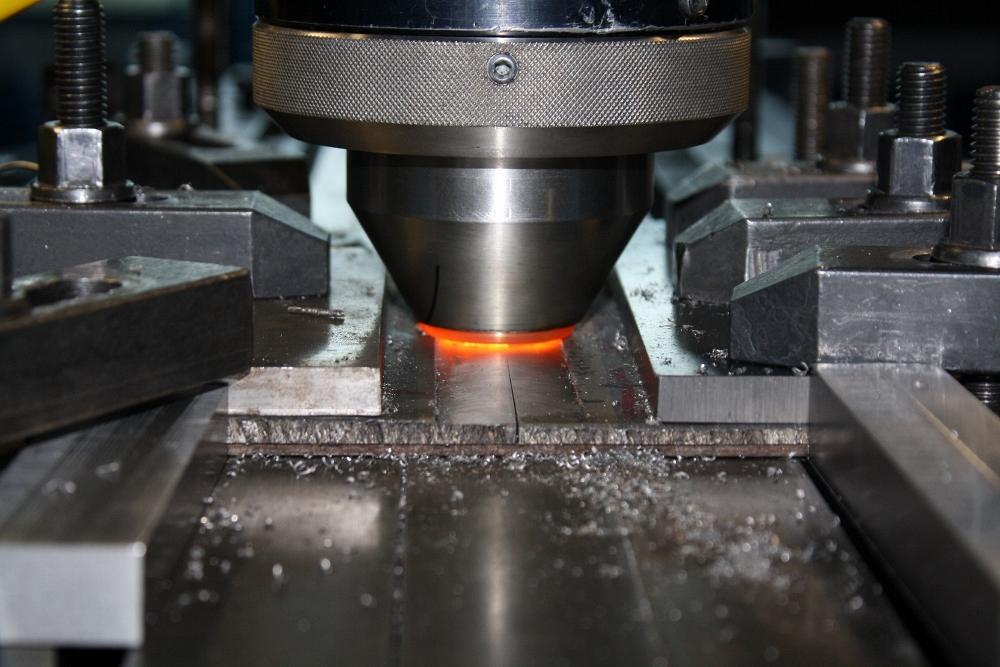- FMA
- The Fabricator
- FABTECH
- Canadian Metalworking
Categories
- Additive Manufacturing
- Aluminum Welding
- Arc Welding
- Assembly and Joining
- Automation and Robotics
- Bending and Forming
- Consumables
- Cutting and Weld Prep
- Electric Vehicles
- En Español
- Finishing
- Hydroforming
- Laser Cutting
- Laser Welding
- Machining
- Manufacturing Software
- Materials Handling
- Metals/Materials
- Oxyfuel Cutting
- Plasma Cutting
- Power Tools
- Punching and Other Holemaking
- Roll Forming
- Safety
- Sawing
- Shearing
- Shop Management
- Testing and Measuring
- Tube and Pipe Fabrication
- Tube and Pipe Production
- Waterjet Cutting
Industry Directory
Webcasts
Podcasts
FAB 40
Advertise
Subscribe
Account Login
Search
TWI friction stir welds ODS steel
- January 15, 2016
- News Release
- Metals/Materials
As part of its core research program into the friction stir welding of steel, U.K.-based research, technology, and engineering organization TWI has welded a number of samples of oxide dispersion-strengthened (ODS) steels. These specialized alloys have been developed to deliver excellent strength and creep performance at elevated temperatures, making them suitable for applications in nuclear reactors and power-generation equipment, where they are exposed to very high temperatures.
ODS steels derive their properties from a distribution of fine particulates, usually ceramic-based, which impede deformation and imbue the steel with its strength and resistance to creep. Conventional fusion welding techniques destroy these strengthening particulates, preventing the steel from being effectively fabricated.
TWI was asked to friction stir weld samples of these steels as part of a PhD project by Huw Dawson of Manchester University. Being a solid-state process, friction stir welding does not melt the steel being joined and would therefore allow ODS steels to maintain their properties after fabrication.
A number of samples of MA956, embedded with thermocouples to monitor process temperatures, were successfully welded at TWI’s Yorkshire Technology Centre. These samples are now undergoing extensive testing at Manchester University to assess their performance in hostile environments, including their susceptibility to irradiation damage. It is believed that the friction stir welding process, besides being able successfully to weld ODS steel, may also render it less prone to hydrogen cracking—an advantage for welds operating in a nuclear environment.
subscribe now

The Fabricator is North America's leading magazine for the metal forming and fabricating industry. The magazine delivers the news, technical articles, and case histories that enable fabricators to do their jobs more efficiently. The Fabricator has served the industry since 1970.
start your free subscription- Stay connected from anywhere

Easily access valuable industry resources now with full access to the digital edition of The Fabricator.

Easily access valuable industry resources now with full access to the digital edition of The Welder.

Easily access valuable industry resources now with full access to the digital edition of The Tube and Pipe Journal.
- Podcasting
- Podcast:
- The Fabricator Podcast
- Published:
- 04/16/2024
- Running Time:
- 63:29
In this episode of The Fabricator Podcast, Caleb Chamberlain, co-founder and CEO of OSH Cut, discusses his company’s...
- Trending Articles
Capturing, recording equipment inspection data for FMEA

Tips for creating sheet metal tubes with perforations

Are two heads better than one in fiber laser cutting?

Supporting the metal fabricating industry through FMA

Omco Solar opens second Alabama manufacturing facility

- Industry Events
16th Annual Safety Conference
- April 30 - May 1, 2024
- Elgin,
Pipe and Tube Conference
- May 21 - 22, 2024
- Omaha, NE
World-Class Roll Forming Workshop
- June 5 - 6, 2024
- Louisville, KY
Advanced Laser Application Workshop
- June 25 - 27, 2024
- Novi, MI


























